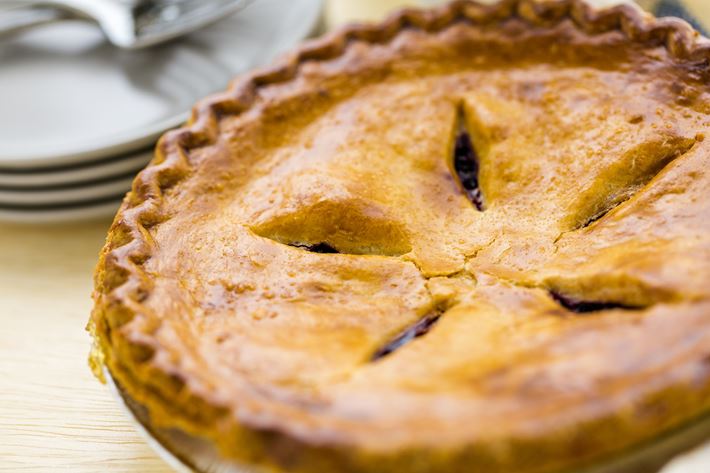Who doesn't like pie? If you own the family cottage with your siblings or other family members it's probably more like a pie than you think. Looking at your deed you might see something like this:
Peter MacKenzie, of Sydney, Nova Scotia
- and -
Paul MacKenzie, of Sydney, Nova Scotia
- and -
Mary MacDonald, of Iona, Nova Scotia
AS JOINT TENANTS AND NOT AT TENANTS IN COMMON
What does “Joint Tenants” mean?
What does “Tenants in Common” mean?
These are two different ways people can own property. One means the whole pie - shared. The other means separate pieces of the pie. Let me unpack that.
Imagine the cottage property is a whole pie.

Delicious.
If you own your property with other people as Joint Tenants it means you have an undivided interest in the property. What does that mean? In the case of Peter, Paul, and Mary it means they each own the whole thing, but they own it together. They each have an undivided one-third interest. Their pie would be undivided. Peter can't sell his interest in the property as a separate piece and the property can't be sold without Peter's signature. Joint Tenancy carries with it the “right of survivorship” – meaning if Peter dies tomorrow, Paul and Mary automatically inherit his interest in the property without the need for using Peter’s Will. In the context of the family cottage, and in other cases as well, Joint Tenancies can be used as an estate planning measure to avoid the cottage from being included in a deceased person's estate (i.e. to avoid probate fees).
Tenants in Common on the other hand means each of the owners of a property have their own separate interest. In the case of Peter, Paul, and Mary they each have a separate one third interest in the cottage. Their pie would look like this:

Mary can sell her interest to anybody she wants. If Mary dies tomorrow her interest is handled by her Will (if she was organized enough to have one prepared) and her heirs will receive her share of the cottage. This means, over time, cottages can end up with many owners. Imagine Mary died leaving her cottage interest to her three children as Tenants in Common and they each had three children, leaving their respective interests to their children as tenants in common. Assuming Peter and Paul are still alive after all this, the pie would look something like this:

Complicated. Which is why most people try to keep things simple by giving the cottage to their children as Joint Tenants. This strategy doesn’t always work. Families have unique dynamics and leaving the family cottage to your children as Joint Tenants is not a one size fits all solution. You need sound advice to determine what's best for you and your family.
We specialize in Cape Breton property and estate planning. Visit manleylaw.ca to get in touch with us.







0
Log In or Sign Up to add a comment.- 1
arrow-eseek-e1 - 1 of 1 items